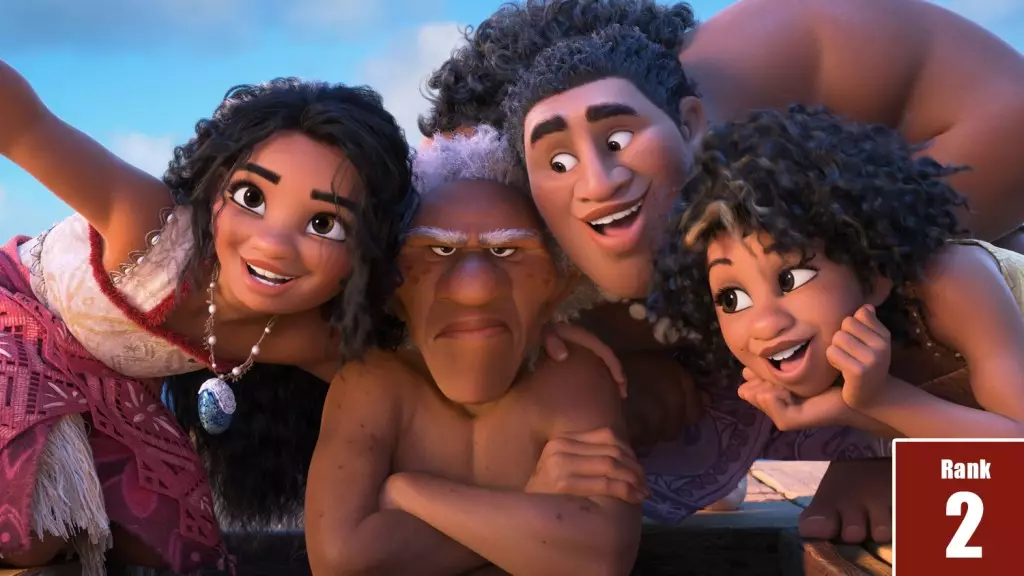As 2024 dawned upon the entertainment landscape, the absence of a major Thanksgiving release from Disney cast a shadow of uncertainty over the studio known for its blockbuster franchises. In a post-COVID world, where box office hits like “Frozen” and “Wreck-It Ralph” seem like relics from a bygone era, Disney found itself grappling with the question: how to regain audience trust and enthusiasm? CEO Bob Iger’s strategic pivot back to theatrics—turning a previously planned Disney+ Moana series into a full-fledged theatrical sequel—suggests a profound understanding of audience psyche. In a climate where streaming giants have shifted the terrain, Disney’s decision embodies a renaissance for traditional cinema. It begs the question: Are theatrical releases the ultimate answer to bolstering the cinematic experience, or are we merely clinging to a fading past?
The Streaming Paradox: A Double-Edged Sword
The current cinematic landscape is rife with contradictions. While Disney and traditional studios like Warner Bros. and Sony bank on theatrical releases to funnel money through box offices, streaming services like Apple and Amazon employ secretive methods to assess a film’s success post-cinema. This divide raises the stakes for a film’s box office performance—traditional metrics fail to account for the nuanced world of streaming revenues. By excluding these streaming giants from their evaluation criteria, Disney’s blockbuster strategy seems almost archaic. The company is daring to reclaim its historical dominance while others navigate unchartered waters. This polarizing approach emphasizes a critical question: how do we truly define success in an industry where data is often obscured by corporate interests?
Moana 2: A Winning Formula
With “Moana 2,” Disney has not just produced a sequel; it has crafted an event designed to deliver on every front. The decision to bring back original talents like Dwayne Johnson and Auli’i Cravalho is borne out of a realization that audiences crave those familiar voices and images that connect them to the original—a strategy that harkens back to the strength and nostalgia of the Disney brand. The change in songwriting—handing the reins from Lin-Manuel Miranda to Abigail Barlow and Emily Bear—demonstrates a calculated risk. When crafting musical cinema, fresh perspectives can prove revitalizing, allowing the sequel to diverge from its predecessor while still capturing the exuberance that made the original so beloved.
Moreover, the film’s astonishing box office performance ($225.4 million over the Thanksgiving weekend) reflects not only successful marketing strategies but also a well-timed release that took advantage of the highly lucrative holiday season. Here, festivals and family gatherings converge with cinematic escapism—a combination that has proven time and again to be a goldmine.
Merchandising and Ancillary Revenue: The Hidden Goldmine
While box office returns offer immediate gratification, they tell only part of the story. The merchandise boom that has accompanied the release of “Moana 2” plays a crucial role in Disney’s bottom line, eclipsing initial expectations. This product line not only adds to Disney’s financial success but also stands as a testament to the brand’s ability to extend its narrative beyond the screen. It’s remarkable to realize that this sequel not only astounded audiences but also became the biggest merchandise driver for Disney films in 2024. This additional revenue stream significantly enhances the movie’s overall profitability, pushing its net profit to an impressive $415 million after factoring in all costs associated with production and marketing.
This should provoke a debate: does the value of a movie extend beyond ticket sales? Disney’s savvy understanding of this adds a fascinating element to the discussion of cinematic value in a rapidly evolving industry that often loses sight of the bigger picture.
Looking Ahead: A New Age for Disney and Its Rivals
Iger’s insistence on the importance of theatrical releases indicates a possible shift in the blockbuster landscape. If other studios observe such prolific success, they may be encouraged to reclaim their cinematic roots. The question that looms large is whether this trend will signify a renaissance for cinema as a whole or merely a flash in the pan—an instance where nostalgia temporarily overshadows innovative storytelling approaches.
As we dissect the dominance of Disney in 2024, one thing is evident: the squirrels and gears of Hollywood are evolving. Traditional studios that have thrived on cinematic grandeur must realign their strategies to stay relevant in a world where streaming and global demands are at odds. Ultimately, the trajectory seems to suggest that if you exploit the theatrics uniquely and purposefully, reclaimed glory in the box office might not just be probable; it could be inevitable.

